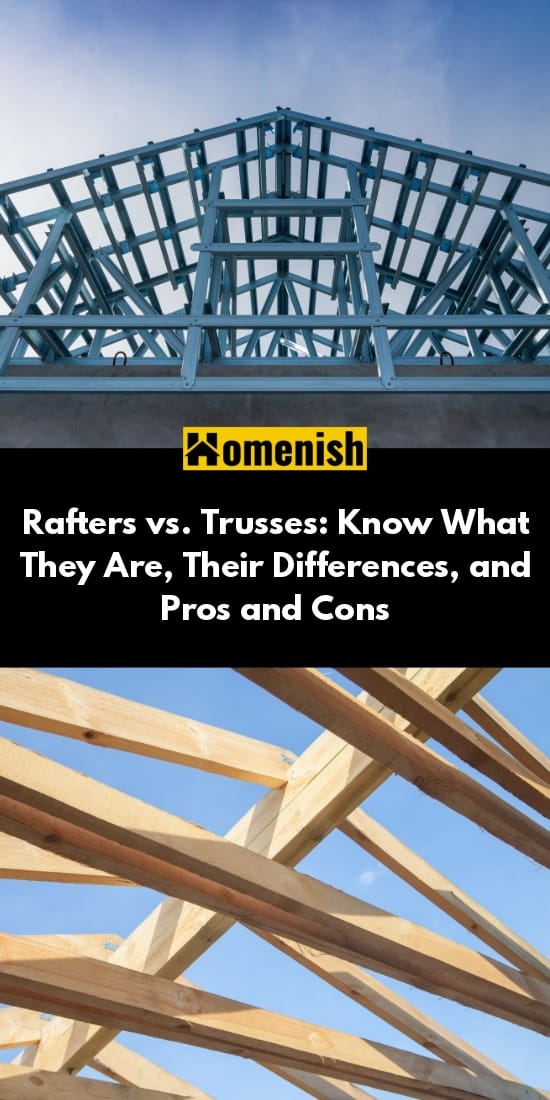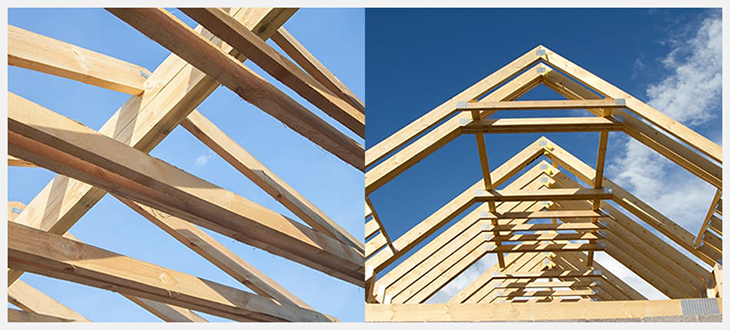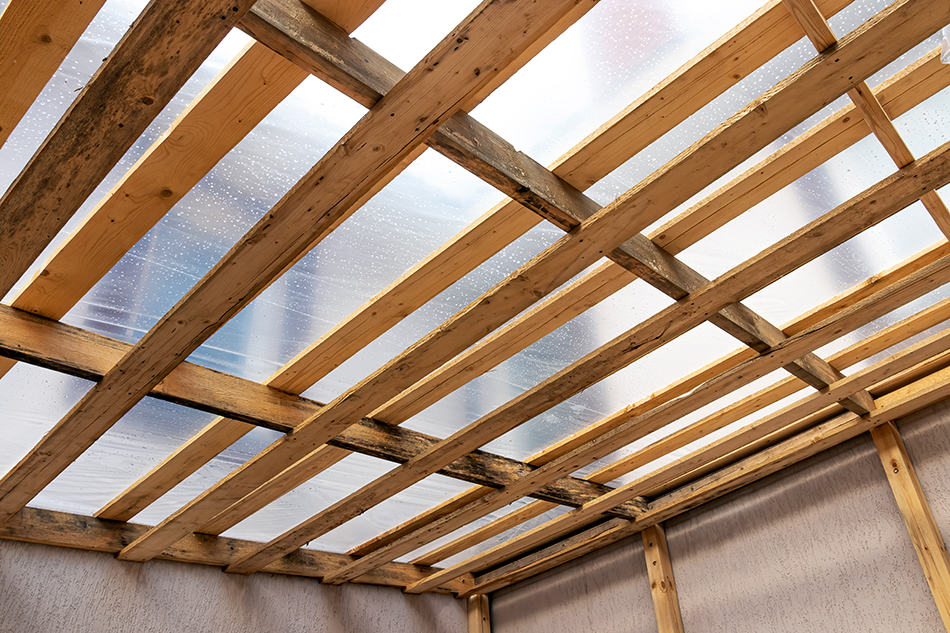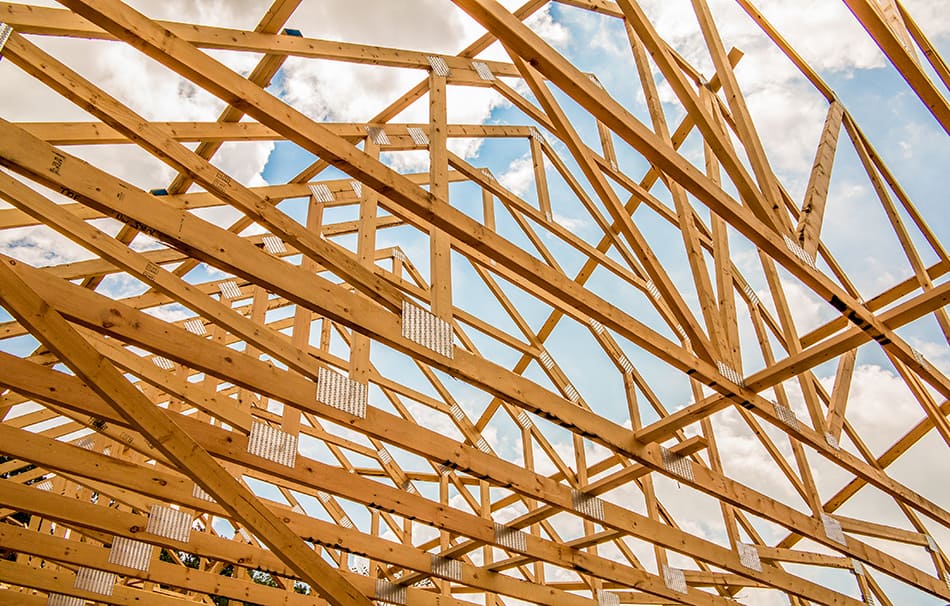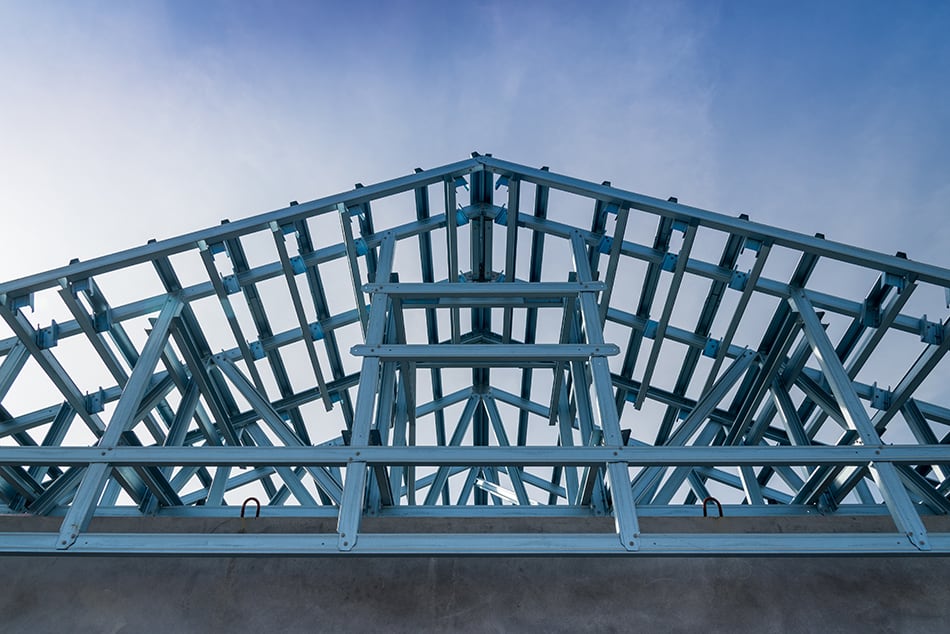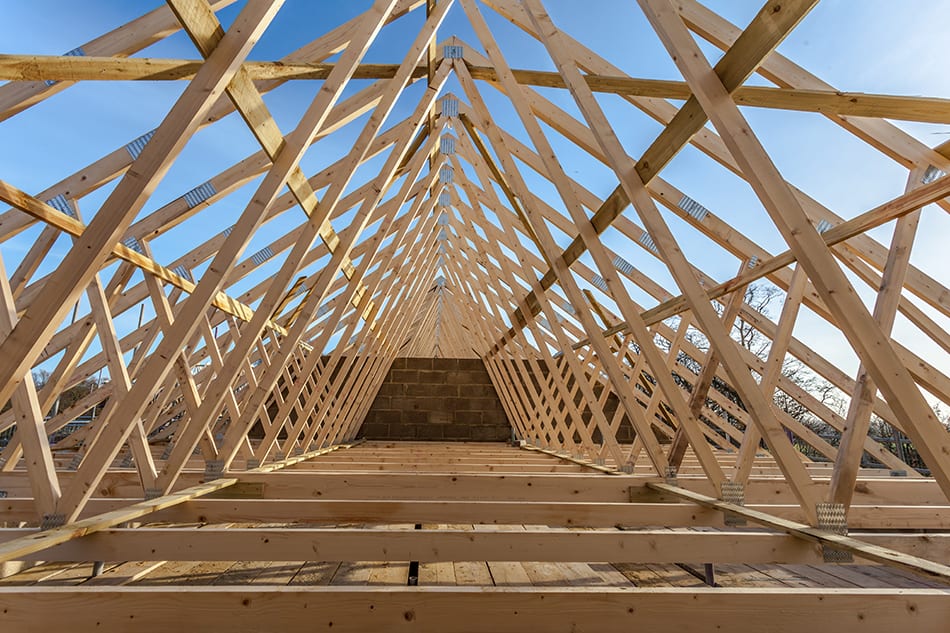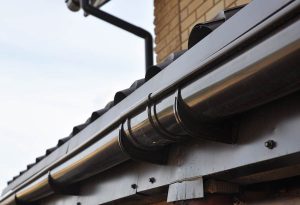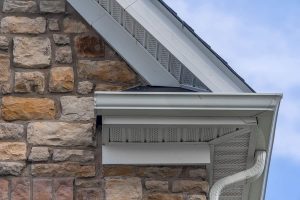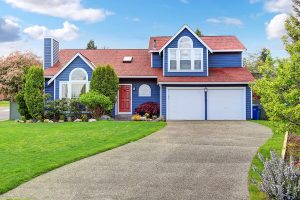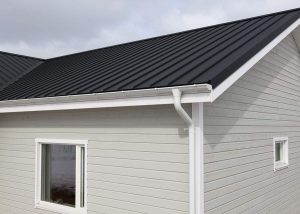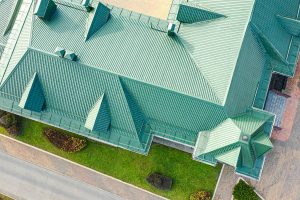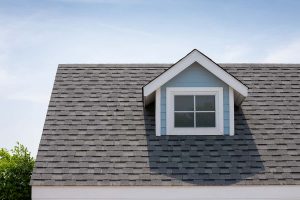If you’re constructing a new home or building an addition to your existing house, one of the biggest decisions you will have to make is how the roof will be supported. Unless you’re planning on building a flat roof structure, you will have to decide whether you’ll be using rafters or trusses for the roof framing.
Rafters are most often seen in older homes, while trusses are increasingly replacing the conventional rafters in new-build residential properties.
Still, both methods have their own advantages and disadvantages, which I will go into more detail a little later in this article.
First, let’s explore what rafters and trusses are and their main differences.
What Is A Rafter?
A rafter is a traditional roof framing method in the form of elongated lumber that’s normally inclined from a central ridge beam and joins with the outer walls.
Constructing a roof using rafters is also known as stick framing, which simply means that each rafter is built on-site with lumber. Every piece of lumber is carefully measured, cut, and tightened together labor-intensively in order to form a rafter.
Rafters play a vital role as their main purpose is to hold up the roof as well as the roof decking.
What Is A Truss?
Trusses are prefabricated structures that are mostly made from wood. They are installed as triangular-webbing structures to support the roof. Trusses play a major role in the tying process with the external walls.
A typical roof construction in a residential building is composed of multiple trusses placed evenly out over one end of the property to the opposite end. Unlike traditional rafters that are installed on-site, trusses are made in a factory before getting delivered to the work site for installation.
Main Differences Between Rafters and Trusses
It’s not just the construction and fabrication methods that differ between rafters and trusses. Since these two roofing systems produce different results, their differences are quite distinct.
As mentioned before, trusses are prefabricated roof constructions that are normally placed symmetrically. These trusses are automatedly cut in the factory under extreme precision. The most important difference between trusses and roof rafting structures lies in their preparation and installation process.
While rafters and trusses have many similar loads and parts, including sloping boards and bottom joists, the functional difference between these two roofing structures is the narrower dimensional boards of trusses that make them less sturdy than rafters. This, however, is compensated by using more materials in place of the wider boards. Rafters, on the other hand, contain two primary outer beams to support the structure of the roof.
Trusses can be made in all shapes and sizes and customized to fit the construction project. The fact that they are built in a manufacturing facility rather than on-site means the labor cost is reduced.
A quick summary:
- Both trusses and rafters are triangular shaped planks, with the trusses containing more webs inside the main frame.
- Trusses are prefabricated roof structures, whereas rafters are assembled on-site.
- Rafters cost more than trusses as their installation process is labor-intensive.
- Trusses are composed of multiple beams for added support. Rafters, on the other hand, contain two main beams to support the roof.
- More people now prefer to use trusses for their roofs because of their aesthetic beauty.
Advantages of Rafters
More head height in the attic
If you want to convert your attic space into an extra room or use it as extra storage, rafters are a better option since they leave the attic ceiling wide open for maximum head height.
Can be used anywhere
As rafters are built on-site, they are perfect for difficult-to-reach building locations. Rafters can also be delivered using a boat, helicopter, or pickup truck to any remote building site.
Ideal for small construction projects
You can use rafters for building a shed, cabin, or a small addition without having to wait for trusses to be made in a factory. There is no need to go through the hassle of creating and designing a roof truss for small projects, such as garages or sheds. Simply use rafters that are cut to shape on-site.
Reduced lead time
Because rafters are stick-built as and when required, they need less advance planning for installation. This is unlike trusses that require accurate planning in the factory with exact measurements well ahead of time.
Drawbacks of Rafters
More time-consuming
Installing rafters at the work site is a slower process that requires more people. In fact, a large residential roofing rafter may take up to a week to build.
Costly
When you take into account the higher labor rate and the required materials, rafters come out as the most expensive option.
Skilled workers required
Finding workers with the specific skills to build rafters is fast becoming a rarity. This is because these craftsmen are getting older and most are even retiring now.
Slower pace of building
Once the walls are up and the work on hand-building each rafter starts, you should expect a long process that can be further delayed if adverse weather rolls in.
Advantages of Trusses
Less expensive
Roof trusses have smaller wood planks that are engineered with the same strength as high-quality wood. However, they are less expensive than rafters. What’s more, roof trusses are built in a factory under a controlled environment with the highest quality machinery. And since the process of building trusses is mostly automated, they can be built and installed for less.
More accuracy
There is less chance of making mistakes in the fabrication of roof trusses than building rafters. This is because trusses are built in a controlled environment with careful specifications that are loaded into a program. The components of trusses are digitally measured and cut to precision, so the chances of making mistakes are nil.
Quicker construction
Small trusses can easily be lifted by two or three people, so the roof of most residential projects can be trussed within one or two days.
Greater strength
Thanks to the inner webbing of these roof materials, they can effectively hold the weight of the entire roof. Furthermore, the triangular structure consists of shorter and cheaper planks of wood.
DIY friendly
Any DIY enthusiast can install a truss. The installation of trusses is a much less complicated task than building rafters one at a time. So if you want to build your own roof structure, you can obtain a truss package that comes with step-by-step installation instructions. All the trusses in a DIY package will be numbered or marked for easy identification.
Drawbacks of Trusses
Limitations in ceiling design
Due to the structural webbing of roof trusses, there are limitations on what you can do with the space in between and beneath them. Most homes with roof trusses have flat ceilings, not vaulted ones like rafters. So you may not get the adequate head height you need in a trussed attic for conversion.
No future alternations possible
Since trusses are interdependent structures, once they are fabricated and installed, it won’t be possible to make any future modifications. This can potentially pose a problem in the long term due to the wear and tear of the structure. Even if you want to drill a small hole through the truss for cable installation can compromise its structural integrity.
No room for storage or conversion
The triangular webbing of trusses not only makes attic conversion impossible, but it also diminishes the chance of using the open attic space for storage of large boxes or other items.
Big weight and size
Trusses are large and heavy. They require two or three people to deliver them to the work site with the help of a forklift.
What Type Of Material Is Used For Roof Trusses and Rafters?
The types of wood used for building trusses depends upon their availability in the area. But generally, there are three common types of wood used to make roof trusses: fir, yellow pine, and red cedar. These woods can either be reinforced by applying glue or laminating thinner pieces glued together to form a thicker beam for the truss.
Aside from wood, there are also metal roof trusses that can be used for buildings. These trusses are not a good substitute for wood as they not only cost more, but they also require more maintenance and not all roofers are skilled at installing these types of trusses.
Metal is not a material that can withstand heat as efficiently as wood when it comes to insulation and rust. So to avoid any future issues, it’s best to opt for wood instead of metal.
For decking, planks made from solid wood lumber are used. These planks are placed side by side to intersect the other boards on rafters. The rafters can then be fastened efficiently using nails. Most rafters are made of cedar wood or pine. But there is also the laminated veneer plank that can be up to 5 times longer than a wood rafter.
Which One Is Better? Trusses or Rafters?
This mainly depends on the type and scale of your construction project. If you’re in a hurry and want to complete your project in the quickest possible time, then it’s best to opt for trusses. Rafters can take as long as a week to install and only the most experienced roofers can handle them. Roof trusses, on the other hand, can be installed on an average house within a day.
Roof trusses have a longer lead time than rafters as they require careful planning, drawing, and engineering. The entire process of a roof truss system can take several weeks before it’s ready to be installed.
But not all trusses are created the same. The type of plank used to build a truss makes a big difference in how it will turn out. It also depends on the truss company you choose to build the lumber for your project. It is important to pay attention to the type of lumber used on the roof truss. After all, a truss cannot be constructed without lumber, so the better quality the lumber is, the better truss it will turn out. Tip: white fir or hem fir is the strongest and the most stable type of lumber for trusses.
If you are looking for a more stable roofing structure with less bounce, then trusses will be a perfect choice. This is because a single piece of plank sitting by itself across a gap tends to be less bouncy than a board that’s connected up with other triangular-shaped boards. Well, that’s how roof trusses work.
Prefer an open space? Then roof rafters are the best option as they create a feeling of open space and look wonderful in the attic. Although trusses can also be used to create a vaulted ceiling look, they’re not as effective in creating an open space look. Traditional rafters do a better job in providing an open space that’s ideal as storage or loft conversion.
Consider The Size of Your Project
If you have a small project, such as an addition to your house or a garage, rafters make a viable option. It will not be worth the hassle of creating a roof truss for such small projects. So it’s important to take the size of the project into consideration first before deciding.
Trusses are most suitable for larger-scale structures. They require a crane to lift them up as they’re too heavy to be transported and fitted into place by one person.
Final Thoughts
While it may be difficult to choose between trusses and rafters, you can make an informed decision based on the above information. Just think about the size of your project, what you want to do with your roof space, and whether you will be modifying it in the future. Remember that you won’t be able to make any alterations once the trusses are installed. With these pointers in mind, you can choose the best framing system for your home’s roof.
